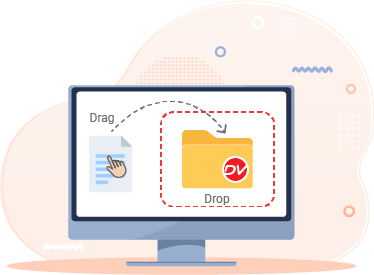How Version Control Prevents Data Loss

Introduction
Data loss is one of the biggest threats to any organization, especially when it involves critical documents. From important contracts to technical reports and compliance records, documents are at the heart of most businesses. Losing this data can result in costly setbacks, legal risks, and a loss of trust among stakeholders. Fortunately, one of the most effective ways to prevent data loss is by implementing document version control within your document management system (DMS).
According to McKinsey, employees waste nearly an hour and a half each day searching for information. This means that for every five employees you hire, one is essentially dedicated to information retrieval.
In this article, we’ll explore how version control helps safeguard documents and prevents data loss.
Understanding Version Control in Document Management
Version control, also known as revision control, is a system that tracks changes to documents over time. Every time a document is edited, a new version is created, preserving a history of modifications. This allows users to access previous versions, review changes, and revert to earlier versions if necessary.
At its core, version control adds a layer of security and transparency to document management. It reduces the risk of data loss by ensuring that every version of a document is securely stored and recoverable, regardless of how many changes or updates are made.
How Version Control Prevents Data Loss
Version control acts as a safeguard in several ways, each playing a key role in preventing data loss. Let’s take a closer look at how it works.
- Preventing Overwrites
In collaborative environments, multiple team members may work on the same document simultaneously. Without version control, this can lead to one user’s changes accidentally overwriting another’s, resulting in lost information Version control helps prevent by allowing only one user to edit a document at a time. This ensures that everyone’s changes are preserved. Example: Two colleagues are collaborating on a report. When one colleague starts editing the document, it’s locked for others. This prevents accidental overwrites and ensures that only one person can make changes at a time. Once the first colleague is finished, the document can be unlocked for the other colleague to edit.
- Reverting to Previous Versions
Mistakes happen. Sometimes, users delete critical sections of a document or make changes that introduce errors. Without version control, this could mean a significant loss of data. However, with version control, every previous version of the document is available, allowing users to revert to a prior version if needed.Example: A contract was inadvertently edited to remove key clauses. Rather than starting over or trying to remember the previous wording, the team can simply revert to an earlier version of the document where those clauses are intact.
- Automatic Saving and BackupOne of the primary ways version control prevents data loss is by saving each version of a document. You can make it mandatory for the users to check-in documents when changes are made, a new version is created and automatically stored within the DMS.Example: When users check-in their documents when they’re finished editing, your document management system automatically creates a new version, preserving their changes and preventing data loss. This ensures that you always have a backup of your documents.
- Maintaining a Clear Change History
A clear change history is essential in preventing data loss. Version control provides a detailed log of every modification made to a document, including the author, date, and description of the change. This allows teams to track down specific updates or recover lost information that may have been mistakenly removed.Example: An organization needs to identify when a specific piece of data was added to a report. Using version control’s change history, they can pinpoint the exact version and restore the relevant data.
Best Practices for Using Version Control to Prevent Data Loss
While version control offers robust protection against data loss, it’s most effective when used correctly. Here are some best practices to maximize the benefits of version control in your document management system:
- Implement Check-In/Check-Out Procedures
Use check-in/check-out functionality to prevent simultaneous edits that could lead to data conflicts. When a document is checked out, it is locked for editing by other users, ensuring that changes are properly managed.
- Create New Versions
Encourage users to save and create new versions when making significant changes instead of overwriting. This will ensure that the document’s history is complete and that you can easily track down specific edits if needed.
- Set Up Automatic Backups
Ensure that your document management system is backed up regularly, preferably to a secure, off-site location. This adds an additional layer of protection in case of system failures or catastrophic events.
- Educate Users on Version Control
Provide training to your team on how version control works and why it’s essential. Ensure they understand how to access previous versions, how to make notes of changes in version notes, and how to revert to earlier versions when necessary.
- Monitor and Audit Document Changes
Regularly audit the version history of important documents to ensure that changes align with organizational policies and that no unauthorized edits have been made. This helps catch potential issues before they lead to data loss.
How Docsvault document version control software helps businesses
Docsvault Document Management Software offers a robust solution for managing document versions, ensuring efficiency, collaboration, and data integrity within organizations. Here’s how it can help:
Centralized Document Repository
- Single Source of Truth: All documents are stored in a centralized location, eliminating confusion and ensuring everyone works on the most up-to-date version.
- Improved Accessibility: Easily locate and access documents from anywhere, anytime.
Automated Versioning:
- Check-in/Check-out: The system automatically creates new versions of documents when they are checked in after edits, preventing accidental overwrites.
- Prevent Data Loss: Ensures that all changes are captured and preserved, preventing accidental overwrites.
- Version History: A comprehensive history of document changes is maintained, allowing users to track modifications, identify contributors, and revert to previous versions if necessary.
Security and Compliance:
- Improve Collaboration: Streamline collaboration and reduce conflicts by ensuring everyone is working on the latest version of documents.
- Access Controls: Restrict access to documents based on user roles and permissions, ensuring data confidentiality.
- Audit Trails: Track document activity, including who accessed, edited, or deleted files, to comply with regulatory requirements.
Conclusion
Data loss is a significant risk in today’s digital world. Docsvault document management software offers a robust solution for version control, protecting your documents from accidental deletions and system failures. By implementing version control best practices, you can safeguard your organization’s data and ensure that you always have access to the information you need.




